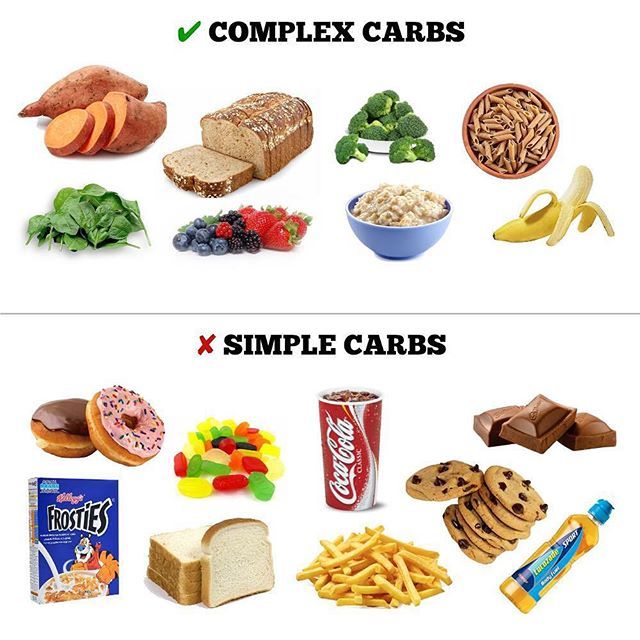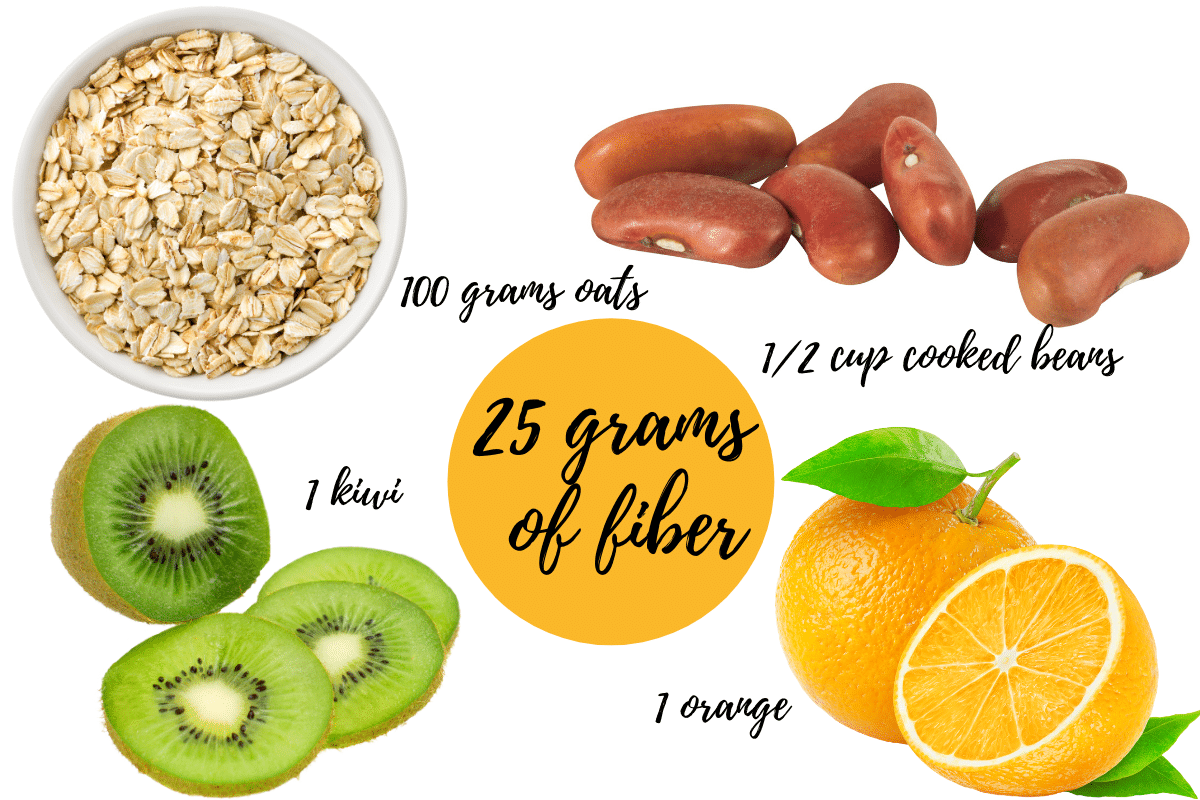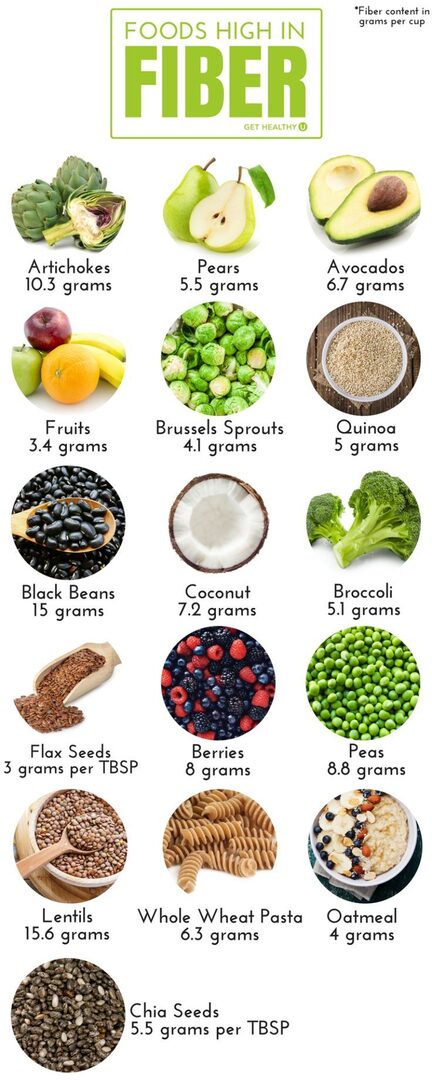Carbohydrates & Dietary Fiber
Understanding carbohydrates:
Carbohydrates are important for everyday bodily functions as they are the primary source of energy
for the human body. Carbohydrates protect muscle mass (protein) from being utilized as fuel during
exercise and serve as fuel for our brains and nervous system.
Carbohydrates are a type of macronutrient found in many foods and beverages. Most carbohydrates occur naturally in plant-based foods, such as grains. Food manufacturers also add carbohydrates to processed foods in the form of starch or added sugar.
Common sources of naturally occurring carbohydrates include:
- Fruits
- Vegetables
- Milk
- Nuts
- Grains
- Seeds
- Legumes
Types of carbohydrates
There are three main types of carbohydrates:
- Sugar. Sugar is the simplest form of carbohydrate and occurs naturally in some foods, including fruits, vegetables, milk and milk products. Types of sugar include fruit sugar (fructose), table sugar (sucrose) and milk sugar (lactose).
- Starch. Starch is a complex carbohydrate, meaning it is made of many sugar units bonded together. Starch occurs naturally in vegetables, grains, and cooked dry beans and peas.
- Fiber. Fiber also is a complex carbohydrate. It occurs naturally in fruits, vegetables, whole grains, and cooked dry beans and peas.
These different types of carbohydrates are categorized based on their number of sugar units and chemical structure.
***
Often carbohydrates are spoken about as simple and complex carbohydrates, below is the differences between these two form of carbohydrates.
Simple carbohydrates are made up of one or two sugar units (monosaccharides and disaccharides respectively) that are digested very quickly and can provide energy very quickly. Often after we consume foods with simple carbohydrates, we can feel a burst of energy followed by what we call the "sugar crash" this often happens are eating desserts or candy. Often these simple carbohydrate foods contain high calories yet lack nutrients like vitamins, fiber and minerals.
If these simple carbohydrates are consumed regularly and not used straight away as fuel, it can lead to weight gain.
Simple carbohydrates are found in highly processed foods such as:
-Candy
-Regular (non-diet) carbonated drinks
-Syrups, table sugar, added sugar
Complex carbohydrates on the other hand are made up of 3 or more sugar units (either oligosaccharides or polysaccharides) that are strung together in long chains, known as complex chains. This form of
carbohydrates take longer to digest and absorb in the body. Unlike simple carbohydrates, complex carbohydrates consist of more nutrients in which supplies our bodies with more fiber and can digest slower, meaning if we eat more complex carbohydrates then we will be fuller for longer. Thus, meaning complex carbohydrates are better for fat loss. We also need to fiber to promote a regular bowl and control our cholesterol levels.
Complex Carbohydrates, often get called "starchy carbs" these are foods such as:
-Starchy vegetables (potatoes, pumpkin, sweet potatoes)
-Legumes (chickpeas, black beans, soybeans)
-Whole-grain foods (whole-grain bread, pasta, rice)
Aim to fill your plates with more Complex carbohydrates over Simple Carbohydrates, daily.

Understanding Dietary Fiber:
What is dietary fiber and why are we always told to, “eat more fiber”?
Not only will high dietary fiber food help you go to the toilet it also has a range of other benefits, such as aids in maintaining a healthy weight, helps lower your risk of diabetes, heart disease and some types of cancer.
Unlike other food components, such as fats, proteins, or carbohydrates which your body breaks down and absorbs, fiber isn't digested by your body. Instead, it passes somewhat intact through your stomach, small intestine, and colon and is later discreated.
There are 2 types of fiber:
1 – Soluble Fiber, dissolves in water (this form of fiber forms a gel-like substance, it can help to lower cholesterol and glucose levels. Can be found in beans, apples, citrus fruits, oats, barley, and carrots)
2 – Insoluble Fiber, doesn’t dissolve (If you struggle with constipation then you should consume more Insoluble fiber, this type of fiber aids in bulking up your stool. Insoluble fiber can be found in, cauliflower, green beans, potatoes, nuts, wheat bran and whole wheat flour)
More added benefits of a high-fiber diet:
- Helps to maintain bowel health
- Keeps bowel movements regular
- Lowers cholesterol and blood sugar levels
- Keeps you at a healthy weight
So how much Dietary Fiber should we be consuming?
The National Research Council states that the optimal range for daily fiber intake is 21 to 38 grams per day. If you were to consume 2000 calories a day your daily fiber intake should be 28 grams a day.
What does 25grams of Fiber look like?

On a daily basis we should be consuming atleast 30 different types of fiber a day, the amount in grams is important, but it is also important to have a varied degree of different types of fiber. All of our daily fiber needs come in the source of whole plant foods.
Such as:
Breakfast: Oatmeal with Raspberries
Lunch: Chicken, Broccoli, and Sweet Potato
Dinner: Whole-Wheat pasta and Brussel Sprouts
However, due to individual differences, the amount of fiber needed to maintain a healthy and diverse gut microbiome varies from person to person.
*Please don't just have white bread for breakfast, lunch, and the white pasta for dinner.
*It is important to keep in mind that you should slowly introduce more fiber into your diet if you have not been having enough, slowly build up to the recommended fiber amount.
Tips on how to increase your daily Fiber intake:
- Start your day off with a bowl of fiber rich cereal (5 or more grams per serving) Be sure to have cereals that have "wholegrain", "Bran" or "Fiber" in their name.
- Make the switch to wholegrain breads, pastas, brown rice & barley.
- Beans and Legumes add a great source if fiber to meals, try adding a can of kidney beans or lentils to chilis, pastas or soups.
- Eat more fruits and vegetables, aim for at least 5 servings a day.

***
*DISCLAIMER: Please consult your GP before making any changes to your diet, this page is just information to help assist and give you some basic nutrition knowledge.
Reference:
AHSA - Heart.org
ISSA Nutritionist Course
BYJU's Course Information
Carbohydrates: How carbs fit into a healthy diet - Mayo Clinic



